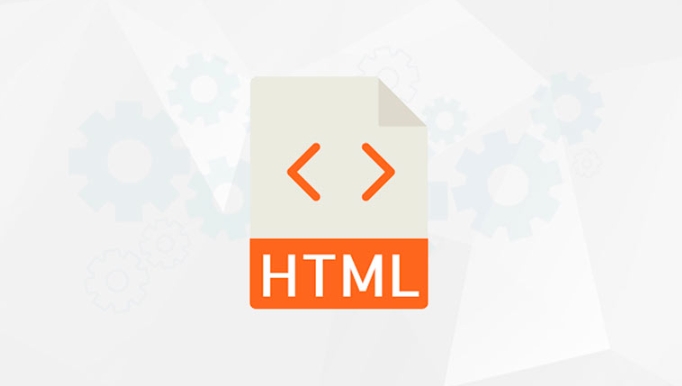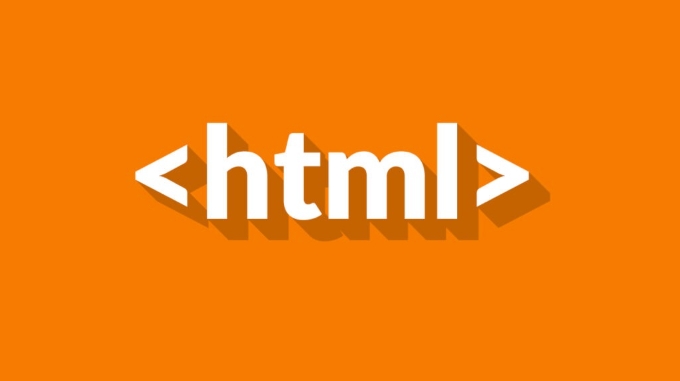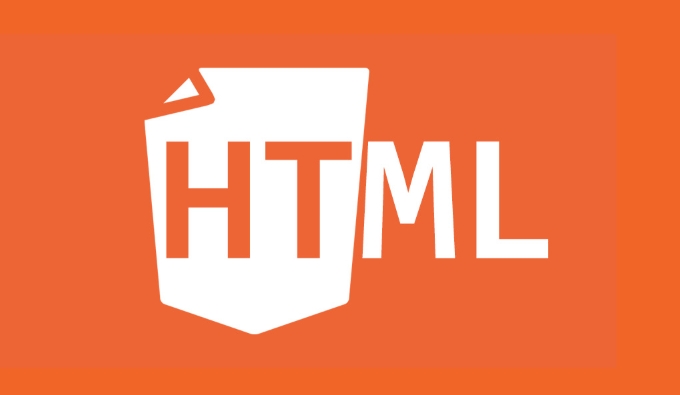To set required fields in HTML forms, 1. Use the required attribute to achieve it; 2. This attribute is Boolean, no value is required, and is suitable for common input types such as text, email, password, etc.; 3. The browser will automatically verify when submitting, and if it is not filled in, it will be blocked and prompted; 4. The prompt information is not customized by default, and can be adjusted through the JavaScript setCustomValidity() method; 5. Note that you cannot rely solely on front-end verification, the back-end still needs to verify data; 6. The performance of the mobile side may be inconsistent, and it is recommended to test the target platform; 7. Avoid multiple required fields simultaneously reporting errors that affect the user experience.

In HTML forms, if you want an input field to be required, the easiest and most effective way is to add required attribute to the input tag. In this way, the browser will automatically check when the user submits the form. If the field is empty, the user will be prompted to fill in it.

Here are some practical questions and suggestions that you may be concerned about when using this property.
How to use required attribute correctly
To make an input box a required item, you only need to add the required Boolean property to the tag, and there is no need to assign values. For example:

<input type="text" name="username" required>
Or use it with other types, such as email, password, etc.:
<input type="email" name="email" required>
As long as this attribute is added, the user will not be able to submit the form if it is not filled in, and the browser will automatically pop up the prompt message. The prompts displayed by different browsers may be different, but they will generally focus on unfilled fields.

What types of inputs support required?
Not all input types are suitable for use with required , but most common ones are supported. Here are some commonly used and well-compatible combinations:
-
text -
email -
password -
number -
checkbox -
radio -
select(drop-down selection) -
file
For example, after the check box is added with required , the user must check it before submitting; while the radio button group needs to be selected at least one of the verifications.
It should be noted that although hidden types also support required , they are easily ignored because they cannot be seen by users, so be especially careful when using them.
Some common things to note
Although required looks simple, there are still several error-prone places in actual development:
Don't rely solely on front-end verification :
requiredis a browser-side verification mechanism and cannot replace back-end data verification. Malicious users can bypass front-end restrictions by disabling JS or sending requests directly.Prompt information is not customizable (by default) : The prompts that come with the browser are usually more basic. If you want to customize the prompt content, you can use
setCustomValidity()method in combination with JavaScript.Note for mobile experience : some browsers on mobile devices do not handle
requiredin a consistent manner. It is best to test the performance of the main target platform.Avoid reporting too many errors from multiple empty fields at the same time : If a form has many
requiredfields, users may see many prompts at once when submitting, and the experience is not very good. At this time, you can use JavaScript to control only one error at a time, or remind it in order.
Basically that's it. Use required reasonably can greatly improve the usability and data quality of forms, but you should also note that it is just the first layer of defense for verification.
The above is the detailed content of HTML `input` `required` Attribute for Mandatory Fields. For more information, please follow other related articles on the PHP Chinese website!

Hot AI Tools

Undress AI Tool
Undress images for free

Undresser.AI Undress
AI-powered app for creating realistic nude photos

AI Clothes Remover
Online AI tool for removing clothes from photos.

Clothoff.io
AI clothes remover

Video Face Swap
Swap faces in any video effortlessly with our completely free AI face swap tool!

Hot Article

Hot Tools

Notepad++7.3.1
Easy-to-use and free code editor

SublimeText3 Chinese version
Chinese version, very easy to use

Zend Studio 13.0.1
Powerful PHP integrated development environment

Dreamweaver CS6
Visual web development tools

SublimeText3 Mac version
God-level code editing software (SublimeText3)
 Applying Semantic Structure with article, section, and aside in HTML
Jul 05, 2025 am 02:03 AM
Applying Semantic Structure with article, section, and aside in HTML
Jul 05, 2025 am 02:03 AM
The rational use of semantic tags in HTML can improve page structure clarity, accessibility and SEO effects. 1. Used for independent content blocks, such as blog posts or comments, it must be self-contained; 2. Used for classification related content, usually including titles, and is suitable for different modules of the page; 3. Used for auxiliary information related to the main content but not core, such as sidebar recommendations or author profiles. In actual development, labels should be combined and other, avoid excessive nesting, keep the structure simple, and verify the rationality of the structure through developer tools.
 Implementing Clickable Buttons Using the HTML button Element
Jul 07, 2025 am 02:31 AM
Implementing Clickable Buttons Using the HTML button Element
Jul 07, 2025 am 02:31 AM
To use HTML button elements to achieve clickable buttons, you must first master its basic usage and common precautions. 1. Create buttons with tags and define behaviors through type attributes (such as button, submit, reset), which is submitted by default; 2. Add interactive functions through JavaScript, which can be written inline or bind event listeners through ID to improve maintenance; 3. Use CSS to customize styles, including background color, border, rounded corners and hover/active status effects to enhance user experience; 4. Pay attention to common problems: make sure that the disabled attribute is not enabled, JS events are correctly bound, layout occlusion, and use the help of developer tools to troubleshoot exceptions. Master this
 Configuring Document Metadata Within the HTML head Element
Jul 09, 2025 am 02:30 AM
Configuring Document Metadata Within the HTML head Element
Jul 09, 2025 am 02:30 AM
Metadata in HTMLhead is crucial for SEO, social sharing, and browser behavior. 1. Set the page title and description, use and keep it concise and unique; 2. Add OpenGraph and Twitter card information to optimize social sharing effects, pay attention to the image size and use debugging tools to test; 3. Define the character set and viewport settings to ensure multi-language support is adapted to the mobile terminal; 4. Optional tags such as author copyright, robots control and canonical prevent duplicate content should also be configured reasonably.
 Best HTML tutorial for beginners in 2025
Jul 08, 2025 am 12:25 AM
Best HTML tutorial for beginners in 2025
Jul 08, 2025 am 12:25 AM
TolearnHTMLin2025,chooseatutorialthatbalanceshands-onpracticewithmodernstandardsandintegratesCSSandJavaScriptbasics.1.Prioritizehands-onlearningwithstep-by-stepprojectslikebuildingapersonalprofileorbloglayout.2.EnsureitcoversmodernHTMLelementssuchas,
 HTML for email templates tutorial
Jul 10, 2025 pm 02:01 PM
HTML for email templates tutorial
Jul 10, 2025 pm 02:01 PM
How to make HTML mail templates with good compatibility? First, you need to build a structure with tables to avoid using div flex or grid layout; secondly, all styles must be inlined and cannot rely on external CSS; then the picture should be added with alt description and use a public URL, and the buttons should be simulated with a table or td with background color; finally, you must test and adjust the details on multiple clients.
 How to associate captions with images or media using the html figure and figcaption elements?
Jul 07, 2025 am 02:30 AM
How to associate captions with images or media using the html figure and figcaption elements?
Jul 07, 2025 am 02:30 AM
Using HTML sums allows for intuitive and semantic clarity to add caption text to images or media. 1. Used to wrap independent media content, such as pictures, videos or code blocks; 2. It is placed as its explanatory text, and can be located above or below the media; 3. They not only improve the clarity of the page structure, but also enhance accessibility and SEO effect; 4. When using it, you should pay attention to avoid abuse, and apply to content that needs to be emphasized and accompanied by description, rather than ordinary decorative pictures; 5. The alt attribute that cannot be ignored, which is different from figcaption; 6. The figcaption is flexible and can be placed at the top or bottom of the figure as needed. Using these two tags correctly helps to build semantic and easy to understand web content.
 What are the most commonly used global attributes in html?
Jul 10, 2025 am 10:58 AM
What are the most commonly used global attributes in html?
Jul 10, 2025 am 10:58 AM
class, id, style, data-, and title are the most commonly used global attributes in HTML. class is used to specify one or more class names to facilitate style setting and JavaScript operations; id provides unique identifiers for elements, suitable for anchor jumps and JavaScript control; style allows for inline styles to be added, suitable for temporary debugging but not recommended for large-scale use; data-properties are used to store custom data, which is convenient for front-end and back-end interaction; title is used to add mouseover prompts, but its style and behavior are limited by the browser. Reasonable selection of these attributes can improve development efficiency and user experience.
 How to handle forms submission in HTML without a server?
Jul 09, 2025 am 01:14 AM
How to handle forms submission in HTML without a server?
Jul 09, 2025 am 01:14 AM
When there is no backend server, HTML form submission can still be processed through front-end technology or third-party services. Specific methods include: 1. Use JavaScript to intercept form submissions to achieve input verification and user feedback, but the data will not be persisted; 2. Use third-party serverless form services such as Formspree to collect data and provide email notification and redirection functions; 3. Use localStorage to store temporary client data, which is suitable for saving user preferences or managing single-page application status, but is not suitable for long-term storage of sensitive information.






